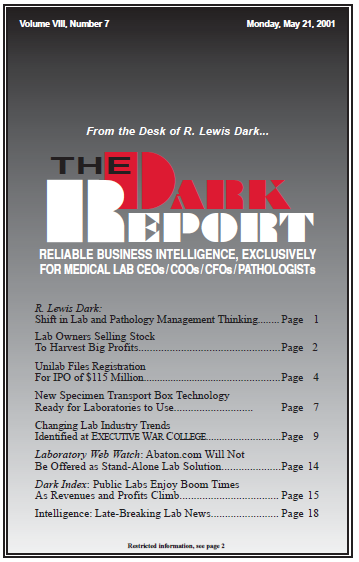CEO SUMMARY: Clinical laboratories and pathology group practices are beginning to respond to a new set of marketplace trends. Speaker after speaker at this EXECUTIVE WAR COLLEGE included new business strategies not heard in past years. Probably the most notable difference is a growing emphasis on developing and delivering value-added services which go beyond simply …
Changing Lab Industry Trends Identified at War College Read More »
To access this post, you must purchase The Dark Report.


